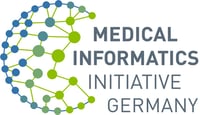Biomedical semantics, information retrieval and knowledge discovery
University of Cologne
This module is part of the certificate „Management and Analysis of Medical Data“
Teaching Language: English, partly German
Workload: 40h presence or online / 140 self-study = 180 total1 (6 ECTS)
Target Group: Bachelor's and master's students in medical or life science informatics, medical and life science students (e.g., biology, biochemistry, bioinformatics), information science students interested in biomedical subjects.



Consultation & Registration:
If you have any questions, please do not hesitate to contact us: info@highmed-lehre.de
Form of teaching: Video-lecture, hands-on, forums, presentations and project
Learning Objectives
This lecture on “Biomedical semantics, information retrieval and knowledge discovery” aims at introducing studies with no previous knowledge on the topics to the world of the Semantic Web and Linked Data with a special focus on Biomedical knowledge and resources. Semantics is used to add labels and meaning to data and to offer opportunities to gather and analyze data around labels, meaning and human understandable topics. This lecture takes advantage of semantics and introduces its use in the biomedical domain, including terminologies and their use in well-known knowledge bases for interoperability and information retrieval. You will learn how to use biomedical data in a way that it is human and machine readable and processable.Competence Level & Competence Type |
Competence Description
Level 1: Know & Understand
Learners know and understand:
- Introduction to semantics and controlled vocabularies
- Understanding why semantics is needed in Life Sciences - Metadata schemas and organizational principles
- Describing the characteristics of metadata schemas - Biomedical terminologies
- Listing some well-known biomedical terminologies - Usage, retrieval and analytics
- Understanding the principles behind data characterization with terminologies
Level 2: Apply & Analyze / Method competence
Learners know and understand:
- Introduction to semantics and controlled vocabularies
- Explaining the relation between semantics and controlled vocabularies
- Distinguishing differences among terminologies in terms of formality and semantics support - Biomedical terminologies
- Explaining differences between generic and specific terminologies
Level 3: Apply & Analyze / Method competence
Learners know and understand:
- Metadata schemas and organizational principles
- Using Dublin-Core to describe data
- Creating a simple vocabulary from CSV files - Biomedical terminologies
- Using Gene Ontology to denote biomedical data - Usage, retrieval and analytics
- Using biomedical terminologies to retrieve literature data
- Using OLS to find terminologies and terms
Embedding:
The module "Biomedical semantics, information retrieval and knowledge discovery" comprises 180 hours of study along 16 weeks. It will introduce students to the world of the Semantic Web and Linked Data with a special focus on Biomedical knowledge and resources.
Bibliography:
- Foundations of Semantic Web Technologies by Pascal Hitzler, Markus Krotzsch, Sebastian Rudolph
- Semantic Web for the Working Ontologist, 2nd Edition by Dean Allemang, James Hendler
1: The times serve as rough orientation. The real times may differ.


